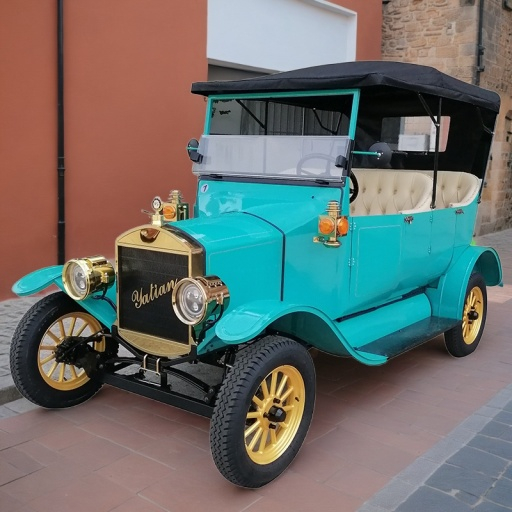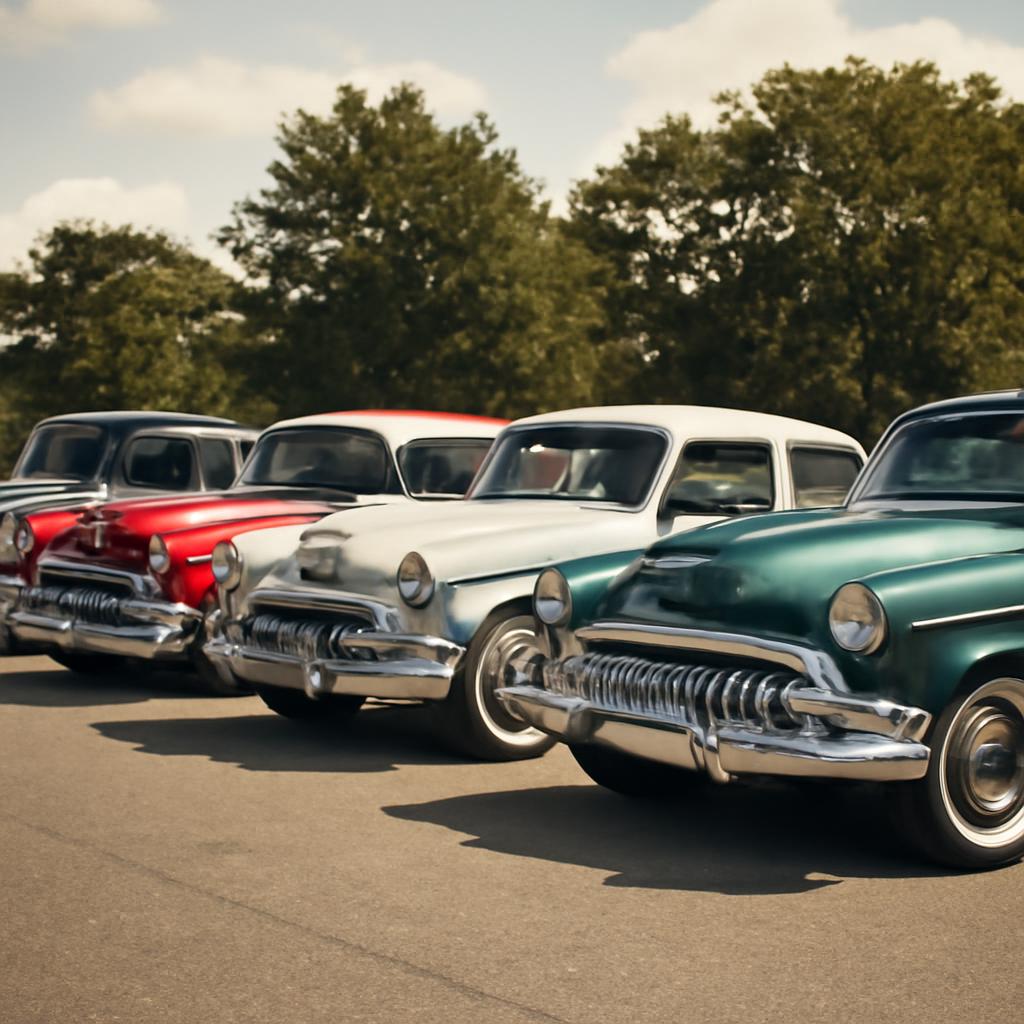Views: 0 Author: Site Editor Publish Time: 2025-11-06 Origin: Site








Are you captivated by the charm of vintage cars? Understanding the differences between classic, antique, and vintage cars is essential for enthusiasts. In this post, we’ll explore each category and what defines a vintage car. You’ll learn how to identify these timeless vehicles and appreciate their unique qualities.
A vintage car typically refers to vehicles manufactured between 1919 and 1930. This era is known for its unique designs and innovations that shaped the automotive industry. Vintage cars are celebrated for their classic aesthetics and craftsmanship.
● Design Authenticity: Vintage cars feature design elements that reflect the early 20th century. Curved lines, chrome accents, and vibrant colors define their look.
● Functionality: These cars were built with a focus on style and performance. Many vintage cars are still drivable today, showcasing their durability.
Key Product Attributes:
● Modern Adaptation: Vintage cars are often used in modern settings, like hotels and resorts, where they add charm and nostalgia. Their presence enhances the ambiance, making them a popular choice for events and photo opportunities.
Classic cars are generally considered to be vehicles that are at least 20 years old but less than 45 years old. They represent a significant period in automotive history, often showcasing innovation and style that influenced future designs.
Classic cars are known for their:
● Timeless Design: Many classic cars have iconic shapes and features that make them stand out.
● Material & Craftsmanship: The materials used in classic cars often include high-quality metals and woods, reflecting the craftsmanship of the time. Attention to detail is paramount, with many models featuring hand-stitched interiors and intricate designs.
An antique car is typically defined as a vehicle that is at least 45 years old. These cars hold historical significance and often represent the earliest forms of automotive engineering.
Antique cars are characterized by:
● Historical Value: They offer a glimpse into the past, showcasing the evolution of automobile design and technology.
● Unique Aesthetics: The design of antique cars is often more ornate, featuring details like wood paneling and leather interiors, which reflect the era's style.
Antique cars are not just vehicles; they are pieces of history. Owning one can be a way to connect with the past and appreciate the craftsmanship that went into creating these timeless machines.

When we talk about classic, antique, and vintage cars, age plays a crucial role in defining each category.
● Vintage Cars: These vehicles were produced between 1919 and 1930. They represent a time of innovation and style in automotive history.
● Classic Cars: Generally, classic cars are those made from 20 to 45 years ago. They often reflect the design trends of their era.
● Antique Cars: To qualify as an antique, a car must be at least 45 years old. These cars often showcase the earliest developments in automotive technology.
Each type carries its own historical significance. Vintage cars, for instance, symbolize a shift in design and engineering. Classic cars often evoke nostalgia for the post-war era, while antique cars remind us of the very beginnings of motoring.
The design elements of these cars are distinct and tell a story of their time.
● Vintage Cars: They feature elegant lines, chrome details, and vibrant colors. Many vintage models have a luxurious feel, often with plush interiors.
● Classic Cars: These vehicles combine style and practicality. You’ll find sleek designs, powerful engines, and often innovative features for their time.
● Antique Cars: Characterized by ornate designs, antique cars often include wood accents and intricate detailing. Their craftsmanship reflects the artistry of early automotive manufacturing.
Interestingly, there’s a growing trend of new energy vintage cars. These modern adaptations maintain the classic aesthetic while incorporating eco-friendly technology. This shift allows enthusiasts to enjoy vintage designs without compromising on sustainability.
Today, each type of car serves different purposes. Vintage cars are often prized possessions, cherished by collectors. They may be showcased at car shows or used for special events. Classic cars, on the other hand, are frequently driven and even restored for everyday use.
Antique cars usually attract collectors who appreciate their historical value. They often require more maintenance due to their age.
Vintage cars are increasingly being optimized for commercial use. For instance, some are repurposed as unique advertising vehicles or photo booths for weddings and events. This not only preserves their aesthetic appeal but also gives them new life in modern contexts.
In this way, vintage cars bridge the gap between past and present, showcasing their timeless allure while adapting to contemporary needs.
The market value of vintage cars is influenced by several key factors:
Factor | Description |
Condition | A well-maintained vintage car can fetch a higher price than one in poor shape. |
Rarity | Limited production models or those with unique features are generally more valuable. |
History | Previous ownership and notable events linked to the car can enhance its appeal. |
When comparing vintage cars to classic and antique vehicles, distinct differences emerge:
Type of Vehicle | Age | Market Value Factors |
Vintage Cars | 1919 - 1930 | Historical significance and aesthetic appeal |
Classic Cars | Over 20 years old | Varies significantly based on age and condition |
Antique Cars | At least 45 years old | High value, especially if rare or in excellent condition |
In recent years, vintage cars have gained immense popularity among collectors. Enthusiasts are drawn to their unique designs and the nostalgia they evoke. The collector market for classic and antique cars remains robust, with many seeking these vehicles for restoration or display.
Interestingly, the trend of investing in vintage cars has grown. Many collectors view these cars as not just hobbies but also as investments. The potential for appreciation in value makes vintage cars an attractive option.
The vintage car market is competitive, with various similar products vying for attention. Other collectible items, such as classic motorcycles and rare bicycles, share a similar appeal to enthusiasts. Here’s a comparison of these collectibles:
Collectible Type | Appeal |
Vintage Cars | Rich history and craftsmanship |
Classic Motorcycles | Thrill of riding and unique designs |
Rare Bicycles | Nostalgia and craftsmanship |
Understanding what makes each vehicle special is crucial for collectors. Whether it’s the story behind a vintage car or the craftsmanship of a classic motorcycle, these elements contribute to their overall desirability and market value.
Vintage cars occupy a cherished spot in media and popular culture, often symbolizing freedom, nostalgia, and style. They frequently appear in films and TV shows, creating memorable moments that resonate with audiences. Notable examples include:
Film/Show | Significance |
American Graffiti | Celebrates the car culture of the 1960s |
The Great Gatsby | Highlights the opulence of the 1920s |
Advertisements also capitalize on the allure of vintage cars, using them to evoke a sense of timelessness and sophistication. Vintage car shows and events further enhance their cultural significance by gathering enthusiasts who share a passion for automotive history.
Restoring vintage cars is an art form, with enthusiasts dedicated to bringing these vehicles back to their former glory. Common restoration techniques include:
Restoration Technique | Description |
Engine Rebuilds | Overhauling the engine for improved performance |
Bodywork | Repairing and repainting the exterior |
Interior Refurbishments | Updating upholstery and dashboard components |
A key question arises: how do we balance maintaining originality with modern upgrades?
Some owners prefer to keep their vintage cars as close to the original design as possible, valuing authenticity and the stories these cars tell. Others opt for modifications, integrating modern technology for improved performance and comfort. This blend of old and new can enhance the driving experience while honoring the car's heritage.
Design authenticity is crucial in restorations. Many restorers draw inspiration from the vintage era, ensuring that any modifications respect the car's original aesthetic. This approach preserves the vehicle's character and honors the craftsmanship of its time. For instance:
Modification | Considerations |
Engine Updates | Ensure compatibility with original design |
Interior Changes | Maintain vintage feel while enhancing comfort |
In this way, vintage cars continue to thrive in modern culture, bridging the gap between past and present, and reminding us of the beauty of automotive history.

As the automotive industry evolves, vintage cars are finding new life through innovative technologies and sustainable practices. The integration of electric and hybrid systems into classic designs is becoming increasingly popular, allowing these vehicles to maintain their nostalgic appeal while meeting modern environmental standards. Here are some emerging trends in this area:
Trend | Description |
Electric Conversions | Many vintage car enthusiasts are opting to convert their classic vehicles to electric power, significantly reducing carbon footprints while preserving iconic designs. |
Hybrid Systems | Incorporating hybrid technology offers a balance between traditional performance and modern efficiency, making vintage cars more practical for everyday use. |
Smart Features | The addition of smart technologies, such as GPS navigation, Bluetooth connectivity, and advanced safety systems, enhances the driving experience without compromising the car's vintage charm. |
These advancements not only cater to eco-conscious consumers but also attract a younger audience interested in the blend of classic aesthetics and modern functionality. As these trends gain traction, vintage cars are poised to thrive in a future where sustainability and innovation go hand in hand.
Classic, antique, and vintage cars each have unique characteristics. Classic cars are typically over 20 years old, while antiques are at least 45 years old. Vintage cars, on the other hand, are often defined by their historical significance and style.
Preserving these vehicles is essential for appreciating automotive history. They tell stories of innovation and culture.
We encourage readers to explore and enjoy vintage car culture. Attend shows, connect with enthusiasts, and appreciate these timeless treasures.
A: A vintage car is typically defined as a vehicle produced between 1919 and 1930, valued for its historical significance and style.
A: Yes, many vintage cars can be driven daily, but maintenance and reliability should be considered.
A: Classic cars are usually over 20 years old, antiques are at least 45 years old, while vintage cars have specific historical criteria.
A: Popular investment options include models from brands like Ford, Chevrolet, and Porsche, especially limited editions.
A: Yes, numerous clubs and online communities exist, offering support, resources, and events for vintage car lovers.